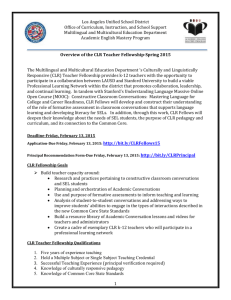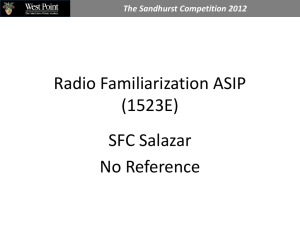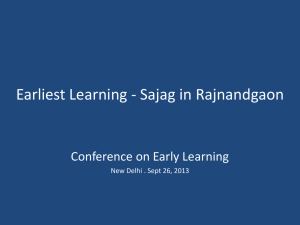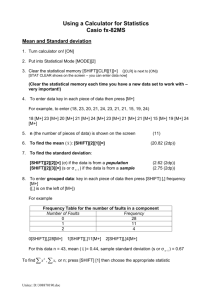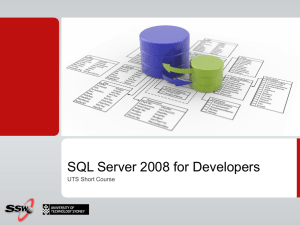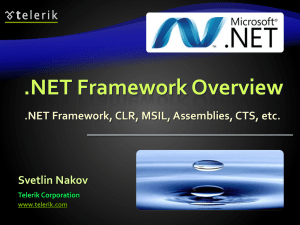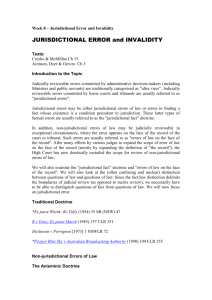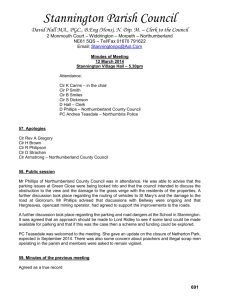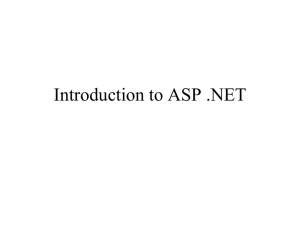Fourth Grade
advertisement
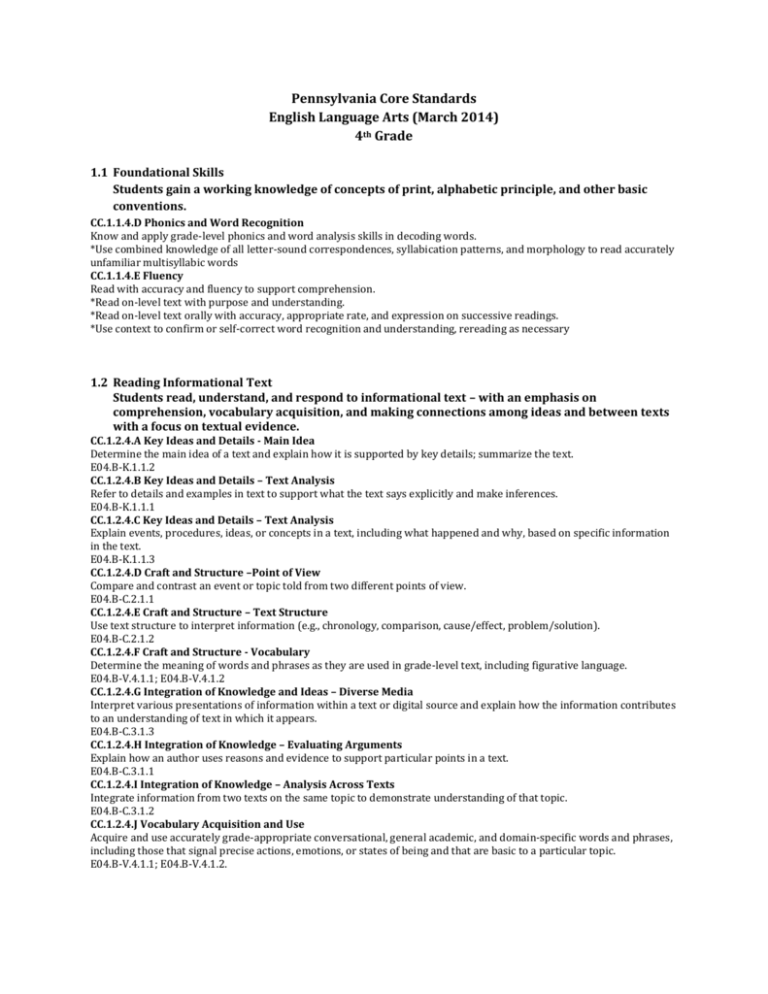
Pennsylvania Core Standards English Language Arts (March 2014) 4th Grade 1.1 Foundational Skills Students gain a working knowledge of concepts of print, alphabetic principle, and other basic conventions. CC.1.1.4.D Phonics and Word Recognition Know and apply grade-level phonics and word analysis skills in decoding words. *Use combined knowledge of all letter-sound correspondences, syllabication patterns, and morphology to read accurately unfamiliar multisyllabic words CC.1.1.4.E Fluency Read with accuracy and fluency to support comprehension. *Read on-level text with purpose and understanding. *Read on-level text orally with accuracy, appropriate rate, and expression on successive readings. *Use context to confirm or self-correct word recognition and understanding, rereading as necessary 1.2 Reading Informational Text Students read, understand, and respond to informational text – with an emphasis on comprehension, vocabulary acquisition, and making connections among ideas and between texts with a focus on textual evidence. CC.1.2.4.A Key Ideas and Details - Main Idea Determine the main idea of a text and explain how it is supported by key details; summarize the text. E04.B-K.1.1.2 CC.1.2.4.B Key Ideas and Details – Text Analysis Refer to details and examples in text to support what the text says explicitly and make inferences. E04.B-K.1.1.1 CC.1.2.4.C Key Ideas and Details – Text Analysis Explain events, procedures, ideas, or concepts in a text, including what happened and why, based on specific information in the text. E04.B-K.1.1.3 CC.1.2.4.D Craft and Structure –Point of View Compare and contrast an event or topic told from two different points of view. E04.B-C.2.1.1 CC.1.2.4.E Craft and Structure – Text Structure Use text structure to interpret information (e.g., chronology, comparison, cause/effect, problem/solution). E04.B-C.2.1.2 CC.1.2.4.F Craft and Structure - Vocabulary Determine the meaning of words and phrases as they are used in grade-level text, including figurative language. E04.B-V.4.1.1; E04.B-V.4.1.2 CC.1.2.4.G Integration of Knowledge and Ideas – Diverse Media Interpret various presentations of information within a text or digital source and explain how the information contributes to an understanding of text in which it appears. E04.B-C.3.1.3 CC.1.2.4.H Integration of Knowledge – Evaluating Arguments Explain how an author uses reasons and evidence to support particular points in a text. E04.B-C.3.1.1 CC.1.2.4.I Integration of Knowledge – Analysis Across Texts Integrate information from two texts on the same topic to demonstrate understanding of that topic. E04.B-C.3.1.2 CC.1.2.4.J Vocabulary Acquisition and Use Acquire and use accurately grade-appropriate conversational, general academic, and domain-specific words and phrases, including those that signal precise actions, emotions, or states of being and that are basic to a particular topic. E04.B-V.4.1.1; E04.B-V.4.1.2. CC.1.2.4.K Vocabulary Acquisition and Use Determine or clarify the meaning of unknown and multiple-meaning words and phrases based on grade-level reading and content, choosing flexibly from a range of strategies and tools. E04.B-V.4.1.1 CC.1.2.4.L Range of Reading Read and comprehend literary nonfiction and informational text on grade level, reading independently and proficiently. 1.3 Reading Literature Students read and respond to works of literature—with emphasis on comprehension, vocabulary acquisition, and making connections among ideas and between texts with focus on textual evidence. CC.1.3.4.A Key Ideas and Details - Theme Determine a theme of a text from details in the text; summarize the text. E04.A-K.1.1.2 CC.1.3.4.B Key Ideas and Details – Text Analysis Cite relevant details from text to support what the text says explicitly and make inferences. E04.A-K.1.1.1 CC.1.3.4.C Key Ideas and Details – Literary Elements Describe in depth a character, setting, or event in a story or drama, drawing on specific details in the text. E04.A-K.1.1.3 CC.1.3.4.D Craft and Structure – Point of View Compare and contrast an event or topic told from two different points of view. E04.A-C.2.1.1 CC.1.3.4.E Craft and Structure – Text Structure Explain major differences between poems, drama, and prose and refer to the structural elements of each when writing or speaking about a text. CC.1.3.4.F Craft and Structure - Vocabulary Determine the meaning of words and phrases as they are used in grade-level text, including figurative language. E04.A-V.4.1.1; E04.A-V.4.1.2 CC.1.3.4.G Integration of Knowledge and Ideas – Sources of Information Make connections between the text of a story or drama and a visual or oral presentation of the text, identifying where each version reflects specific descriptions and directions in the text. CC.1.3.4.H Integration of Knowledge and Ideas – Text Analysis Compare and contrast similar themes, topics, and patterns of events in literature, including texts from different cultures. E04.A-C.3.1.1 CC.1.3.4.I Vocabulary Acquisition and Use - Strategies Determine or clarify the meaning of unknown and multiple-meaning words and phrases based on grade-level reading and content, choosing flexibly from a range of strategies and tools. E04.A-V.4.1.1 CC.1.3.4.J Vocabulary Acquisition and Use Acquire and use accurately grade-appropriate conversational, general academic, and domain-specific words and phrases, including those that signal precise actions, emotions, or states of being and that are basic to a particular topic. E04.A-V.4.1.1; E04.A-V.4.1.2 CC.1.3.4.K Range of Reading Read and comprehend literary fiction on grade level, reading independently and proficiently. 1.4 Writing Students write for different purposes and audiences. Students write clear and focused text to convey a well-defined perspective and appropriate content. CC.1.4.4.A Informative/Explanatory Write informative/ explanatory texts to examine a topic and convey ideas and information clearly CC.1.4.4.B Informative/Explanatory - Focus Identify and introduce the topic clearly. E04.C.1.2.1; E04.E.1.1.1 CC.1.4.4.C Informative/Explanatory - Content Develop the topic with facts, definitions, concrete details, quotations, or other information and examples related to the topic; include illustrations and multimedia when useful to aiding comprehension. E04C.1.2.2; E04E.1.1.2 CC.1.4.4.D Informative/Explanatory - Organization Group related information in paragraphs and sections, linking ideas within categories of information using words and phrases; provide a concluding statement or section; include formatting when useful to aiding comprehension. E04.C.1.2.1; E04.C.1.2.3; E04.C.1.2.5; E04.E.1.1.1; E04.E.1.1.3; E04.E.1.1.5 CC.1.4.4.E Informative/Explanatory - Style Use precise language and domain-specific vocabulary to inform about or explain the topic. E04.C.1.2.4; E04.D.2.1.1; E04.D.2.1.3; E04.E.1.1.4 CC.1.4.4.F Informative/Explanatory – Conventions of Language Demonstrate a grade-appropriate command of the conventions of standard English grammar, usage, capitalization, punctuation, and spelling. E04.D.1.1.1; E04.D.1.1.2; E04.D.1.1.3; E04.D.1.1.4; E04.D.1.1.5; E04.D.1.1.6; E04.D.1.1.7; E04.D.1.1.8; E04.D.1.2.1; E04.D.1.2.2; E04.D.1.2.3; E04.D.1.2.4 CC.1.4.4.G Opinion/Argumentative Write opinion pieces on topics or texts. CC.1.4.4.H Opinion/Argumentative - Focus Introduce the topic and state an opinion on the topic. E04.C.1.1.1; E04.E.1.1.1 CC.1.4.4.I Opinion/Argumentative - Content Provide reasons that are supported by facts and details. E04.C.1.1.2; E04.E.1.1.2 CC.1.4.4.J Opinion/Argumentative - Organization Create an organizational structure that includes related ideas grouped to support the writer’s purpose and linked in a logical order with a concluding statement or section related to the opinion. E04.C.1.1.1; E04.C.1.1.3; E04.C.1.1.4; E04.E.1.1.1; E04.E.1.1.3; E04.E.1.1.5 CC.1.4.4.K Opinion/Argumentative - Style Choose words and phrases to convey ideas precisely. E04.D.2.1.1; E04.D.2.1.3; E04.E.1.1.4 CC.1.4.4.L Opinion/Argumentative – Conventions of Language Demonstrate a grade-appropriate command of the conventions of standard English grammar, usage, capitalization, punctuation, and spelling. E04.D.1.1.1; E04.D.1.1.2; E04.D.1.1.3; E04.D.1.1.4; E04.D.1.1.5; E04.D.1.1.6; E04.D.1.1.7; E04.D.1.1.8; E04.D.1.2.1; E04.D.1.2.2; E04.D.1.2.3; E04.D.1.2.4 CC.1.4.4.M Narrative Write narratives to develop real or imagined experiences or events. CC.1.4.4.N Narrative - Focus Orient the reader by establishing a situation and introducing a narrator and/or characters. E04C.1.3.1 CC.1.4.4.O Narrative - Content Use dialogue and descriptions to develop experiences and events or show the responses of characters to situations; use concrete words and phrases and sensory details to convey experiences and events precisely. E04.C.1.3.2; E04.C.1.3.4 CC.1.4.4.P Narrative - Organization Organize an event sequence that unfolds naturally, using a variety of transitional words and phrases to manage the sequence of events; provide a conclusion that follows from the narrated experiences and events. E04.C.1.3.1; E04.C.1.3.3; E04.C.1.3.5 CC.1.4.4.Q Narrative - Style Choose words and phrases to convey ideas precisely. E04.C.1.3.4; E04.D.2.1.1; E04.D.2.1.3; E04.E.1.1.4 CC.1.4.4.R Narrative – Conventions of Language Demonstrate a grade-appropriate command of the conventions of standard English grammar, usage, capitalization, punctuation, and spelling. E04.D.1.1.1; E04.D.1.1.2; E04.D.1.1.3; E04.D.1.1.4; E04.D.1.1.5; E04.D.1.1.6; E04.D.1.1.7; E04.D.1.1.8; E04.D.1.2.1 E04.D.1.2.2; E04.D.1.2.3; E04.D.1.2.4 CC.1.4.4.S Response to Literature Draw evidence from literary or informational texts to support analysis, reflection, and research, applying grade-level reading standards for literature and informational texts. E04.E.1.1.1; E04.E.1.1.2; E04.E.1.1.3; E04.E.1.1.4; E04.E.1.1.5 CC.1.4.4.T Production and Distribution of Writing/Writing Process With guidance and support from peers and adults, develop and strengthen writing as needed by planning, revising, and editing. CC.1.4.4.U Technology and Publication With some guidance and support, use technology, including the Internet, to produce and publish writing as well as to interact and collaborate with others; demonstrate sufficient command of keyboarding skills to type a minimum of one page in a single sitting. CC.1.4.4.V Conducting Research Conduct short research projects that build knowledge through investigation of different aspects of a topic. CC.1.4.4.W Credibility, Reliability, and Validity of Sources Recall relevant information from experiences or gather relevant information from print and digital sources; take notes and categorize information, and provide a list of sources. CC.1.4.4.X Range of Writing Write routinely over extended time frames (time for research, reflection, and revision) and shorter time frames (a single sitting or a day or two) for a range of discipline-specific tasks, purposes, and audiences. 1.5 Speaking and Listening Students present appropriately in formal speaking situations, listen critically, and respond intelligently as individuals or in group discussions. CC.1.5.4.A Comprehension and Collaboration – Collaborative Discussion Engage effectively in a range of collaborative discussions on grade-level topics and texts, building on others’ ideas and expressing their own clearly. CC.1.5.4.B Comprehension and Collaboration – Critical Listening Paraphrase portions of a text read aloud or information presented in diverse media and formats, including visually, quantitatively, and orally. CC.1.5.4.C Comprehension and Collaboration – Evaluating Information Identify the reasons and evidence a speaker provides to support particular points. CC.1.5.4.D Presentation of Knowledge and Ideas – Purpose, Audience and Task Report on a topic or text, tell a story, or recount an experience in an organized manner, using appropriate facts and relevant, descriptive details to support main ideas or themes; speak clearly with adequate volume, appropriate pacing, and clear pronunciation. CC.1.5.4.E Presentation of Knowledge and Ideas - Content Differentiate between contexts that require formal English versus informal situations. CC.1.5.4.F Integration of Knowledge and Ideas - Multimedia Add audio recordings and visual displays to presentations when appropriate to enhance the development of main ideas or themes. CC.1.5.4.G Conventions of Standard English Demonstrate command of the conventions of standard English when speaking, based on Grade 4 level and content.
